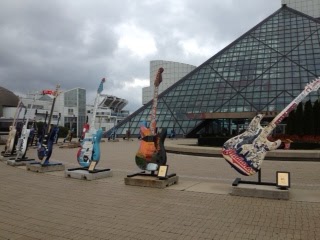So much to share: All of it good.
I am off to Detroit on my own tomorrow to lecture on myelodysplastic syndrome. It will be the 8th different city I have visited in 6 weeks, not including stops at airports and a second trip to Columbus. My agenda still has trips to Columbus x 2, Oakland, Sunnyvale, Chicago, and Atlanta. Most will be taken as a lone road warrior, all before the end of the year. There is even a small chance of another trip for CME, maybe to NYC in December. Thank goodness that the last lecture on CLL to primary care that I am giving this year is in Anaheim, just a short drive away. January and February look almost as crazy. Medical education work in San Francisco, La Jolla, Springfield, MO, and Washington, DC, and pleasure trips to Ireland and Costa Rica. I am glad to be well enough to do all this traveling.
When I am in town, I am busy seeing patients and doctors and family.
I am left doing much of my reading and writing on planes and in airport these days. Thank goodness for my MACBOOK AIR, though the solid state hard drive is getting pretty full.
Let me bring you up to date by starting with my trip almost two weeks ago to OSU for my ibrutinib trial Clinical Trial NCT01217749.
I could not get out of the CT scans without risking losing my spot in the trial. That made the decision easy.
I refuse the dental x-rays, the body scanners at the airport, and whatever I can, but in one day I have essential five sets of CT scans. It is a small price for access to ibrutinib.
If my biggest complaint is the excessive CT scans and travel needed for the trial, I must be doing rather well.
My news from Ohio and the ibrutinib trial was super.
On the too many CT scans Oct 19, they found no enlarged cervical nodes. Nothing at all. Nada. Rien du tout. This is a huge change for the better.
The largest axillary node had shrunk just a little to 2.1 x 1.3 cm and was the only node >1.3 to be found.
The chest remained free of adenopathy as is the usual case in CLL in general and me in particular.
The gut and pelvis is where I had had massive nodes before. The largest node, portal caval, (near the large vein draining the liver, a common site for cancer laden nodes), is still entirely too big at 4.4 x 0.9 cm but it had shrunk from 5.5 x 1.5 cm since June. That is about a 50% drop in area in 90 days. Still a ways to go, but that bad boy had started at 7.3 x 3.3 cm in March. It is less than 20% of the size it was when I started on the trial. One particularly nasty mesenteric node that was over 10 cms six months ago is now only 0.9 x 2.4. No wonder my tummy feels lighter.
And thankful, no surprises. No secondary cancers lurking in the kidneys or liver or lungs. Friends have not been so lucky as I have shared on prior posts with unwelcome findings on the scans.
Well, there is was actually one small surprise, not completely unexpected. My spleen is growing back. This is not of any clinical significant, as my ITP remains well controlled with cyclosporin and IVIG, but will need to be watched. More on that subject later.
Physical exam and blood pressure are all what you want them to be: boring.
Labs are normal except for a mild anemia.
I am hardly cured or even in a complete remission, but every single node has shrunk each time it has been imaged, and by any definition, I am in a deep partial remission.
Ibrutinib seems to be continuing to perform as it best publicity suggests it should for the majority of those in trials. It decreases the tumor burden at a slow and steady by shrinking the nodes where the cancer is most active and productive, and certainly in my case, most prominent. I never had very high lymphocyte counts, but had massive painful nodes. There is every reason to believe, based on those ahead of me in the study, that this painless cancer shrinkage and control should simply continue for who knows how long.
In three short months, my visit to OSU will include more CT scans and a bone marrow biopsy, then the OK to roll over into the continuation trial.
So to celebrate I stopped at the Rock and Roll Hall of Fame on my way home via Cleveland, and spent half my too short visit at the Beatles display. A splendid time was had by all. I highly recommend it.
Life is good.
A great middle eastern meal with an important and kindly MDS expert and the amazing Diego Rivera mural and more at the Detroit Institute of Art await this weekend.
But honestly, I would rather be at home reading and writing and walking on the beach and eating organic raw food.
Labels: Clinical Trial NCT01217749, CME, CT scan. nodes, Flying, ibrutinib, Rock and Roll Hall of Fame



